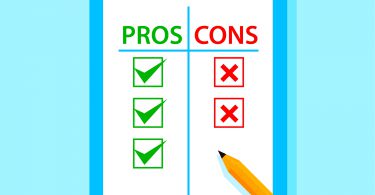When going to a job interview, it’s important to have a strong understanding of the types of qualifications that your potential employer is looking for. The college baseball recruiting process is no different. As a recruit, you should have a firm grasp on the things college coaches are looking for. There is a long list of things that coaches evaluate in prospects, both on and off the field. You can read about what college recruiters are evaluating in our popular series that follows Alex, a recruit just like you.
The best recruiters are looking at both quantitative (measurables) and qualitative (eye test) recruit characteristics to inform their decisions. In this article, we want to discuss one quantitative aspect of the evaluation that players and parents often over-emphasize—high school stats.
How do College Coaches Use Stats to Evaluate
Yes, college coaches are looking at the stats of players they evaluate. But as the pull quote above from a Power-5 head coach indicates, stats are a cause for red flags more often than they will cause a coach to pull the trigger on making an offer. Coaches, to various degrees, look at stats to validate their evaluation and get a more complete picture of a player and their performance. A player with a great skill set but poor numbers may indicate weakness in the mental game or an inability to transfer training to the field, for example. A player with no standout skill who has stats that jump off the page may indicate a gamer or high baseball IQ. In this sense, stats can act as useful information to recruiters.
However, most coaches are not putting the emphasis on stats that recruits and parents think because other quantitative data (measurables like velocity, spin rate, bat speed, etc.) and qualitative analysis (arm action, presence, athleticism, etc.) translate better to success at the next level. Because baseball is often seen as a numbers game, recruits (and parents) often make the mistake of emphasizing stats in two major ways. First, they use stats as a way of comparing themselves to teammates or peers. Second, they use high school stats as part of their sales pitch in attempts to garner interest from college coaches. While stats may seem like an easy and logical way to get attention or compare two players, both uses are flawed. We explain why below.
Why Stats Shouldn’t Headline Your Recruiting Pitch
As we mentioned above, there are certain skills that translate to success at the next level. Since your stats depend heavily on your competition and your competition is nowhere near as qualified as it will be at any college level, stat lines don’t always transfer to the college game like skills and tools do. As implied in the pull quote, high school stats should be inflated. Batted balls that are hits in high school may turn into outs in college. Pitches that are swing-and-misses in high school can become hard hit balls in college. Hitting .400 against a majority of pitchers who throw 75-82 is much different from hitting .400 against guys who throw 85+. Good college coaches can assess whether your skills will play out at their level. They are more focused on tools, measurables that scale, projectability, and physicality. Your stats don’t tell coaches about your maturity, how-to-win awareness, baseball savvy, or character, all of which are a major part of the recruit evaluation if they like your skill set.
Why Stats Are a Poor Method for Player Comparisons
Comparing two players based on high school stats is a big mistake. For starters, it’s a distraction from the individual focus and attention required to have a successful recruitment. Moreso, not all stat lines are created equal. Here are three quick examples, among many others:
- Hitting .400 in the bottom of the order being fed all fastballs is different from hitting .400 in the heart of the order being pitched tough. Same lineup, different quality to the .400 average.
- Player A has 10 hits in 30 ABs, but all the hits come against average high school pitchers that will not play college baseball. Player B has 10 hits in 30 ABs, all coming against future D1 arms. Two very different stories and possibly skill sets.
- If Player A is playing in the most competitive high school conference in Florida and Player B is playing in Montana, those are also two very different stat lines to compare.
Simply put, your stats may mirror that of a teammate or competitor, but there’s much more college coaches “see” and evaluate when factoring both quantitative and qualitative evaluation. Each player is in a distinct place in their development, each program is looking for specific needs, and each coach has slightly different preferences. As much as possible, you should avoid comparing your recruiting process to that of your peers.
As you can see, relying heavily on high school stats is a flawed way of attracting attention from a college coach and an even worse way to compare yourself to your peers. In addition to being hard to verify and easy to make up, your competition pool is small and recruiting is happening on a national stage. Share your stats with coaches, but understand that they are a very small piece of the puzzle. If you want to get attention from college coaches, develop a strong recruiting plan, recruit schools as hard as you wish to be recruited, play hard and follow Alex’s lead.







